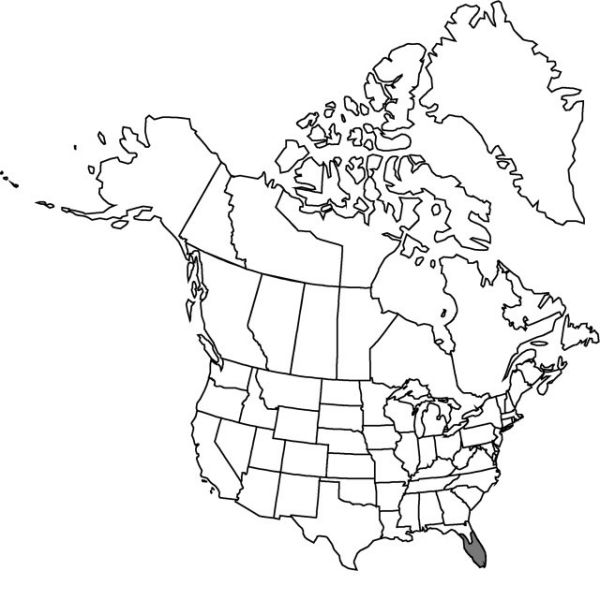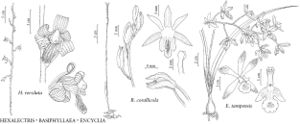Encyclia tampensis
Fl. Miami, 56. 1913.
Plants to 50 cm. Pseudobulbs aggregate, dark green, ovoid-pyriform, 1–7 × 1–2.5 cm. Leaves 1–3, linearlanceolate, 8–40 × 0.5–2 cm, leathery. Inflorescences racemes to panicles, lax, 10–80 cm. Flowers 3–45, green, yellow, or brown, often suffused with purple; sepals and petals similar, extended, oblanceolate-spatulate, 12–22 × 4–6.5 mm, apex obtuse; lip white, deeply 3-lobed, 12–18 × 12–18 mm when spread, middle lobe usually with large purple spot, suborbiculate, 6–10 mm wide, margins undulate, lateral lobes purple-veined, ovate-triangular; callus on isthmus; anthers 1, yellow; column straight, prominent wings on sides of stigmatic cavity, 1 cm. Capsules: pedicel 15–17 mm, body 17–27 × 15 mm, beak 3 mm.
Phenology: Flowering May–Sep; fruiting throughout year.
Habitat: Epiphytic on many different trees and palms in forests and hammocks
Elevation: 0–100 m
Distribution

Fla., West Indies (Bahamas)
Discussion
Flowers of Encyclia tampensis are fragrant, with a sweet or honey odor, starting about noon and peaking in early afternoon when small bees in genera Auglochlora and Halictus pollinate the flowers.
Selected References
None.
